Tomatillos — also known as a Mexican husk tomato — are widely used in Mexican cuisine. Growing tomatillos in your summer garden means you’ll have fresh tomatillos for your favorite recipes. A single tomatillo plant produces an abundant crop (though you’ll need to plant two for cross-pollination).
Planning a garden? Be sure to check out all of my garden posts, from growing veggies, herbs, and fruit, to compost and soil improvement!
Originally published in July, 2019; this post has been updated.
New to gardening? Limited on space? The 5-Gallon Garden gives you the skills you need to grow food in the space you have. Get started with your garden today!
Introduction to Growing Tomatillos
First, let’s start with this: What is a tomatillo?
Often called a Mexican husk tomato, tomatillos are members of the Physalis family. While tomatillos look much like a green tomato, they are two very different fruits.
Most tomatillos take on a yellowish hue as they ripen; they never turn red. Tomatillos are not as juicy as tomatoes, and can be a bit tangy.
Grow Some Greens!
Ready to grow fresh greens, no matter WHERE you live? Sign up for my
FREE quick-start guide and start growing some of your own food!
All tomatillo fruits grow inside a papery husk, which tends to protect the fruit from pests. It’s not uncommon for ripe fruit to drop, and with that husk, they’re safe from slugs and other creepy crawlies that might otherwise damage the fruit — at least for a few weeks.
I’ve found that while tomatoes can be difficult to grow in my Hawaii garden, tomatillos thrive. They seem to be resistant to the powdery mildew that my tomatoes suffer from.
Tomatillo Varieties to Grow
There are several named varieties of tomatillos to consider, but my tip is this: Unless you’re looking for a quirky item to sell at a farmers market, skip the little ones. Husking tiny fruit gets old quickly! Depending on the variety, tomatillos will be ready to harvest in 60 to 85 days. Tomatillo plants grow to about three-to-four feet tall.
Rio Grande Verde: Large fruit is borne on medium-sized plants.
Purple Tomatillo: A deep violet when ripe, these tomatillos are a bit sweeter than the green varieties.
Dr. Wyche’s Yellow Tomatillo: Yellow blushed with purple, the fruit of these tomatillos grows one-to-two inches in diameter.
Since tomatillo plants are rarely (at least in my experience) available at nurseries, you’ll likely be growing tomatillos from seed. Their seeds are small but prolific. In fact, once you’ve grown tomatillos in your garden, you’ll likely find volunteer plants popping up the next season.
Requirements For Growing Tomatillos
Water and Soil Requirements
This is a warm-weather crop. Start seeds indoors six-to-eight weeks before your last spring frost. It takes a week or two for them to germinate.
Transplant seedlings into the garden after all danger of frost has passed. Use the same deep-planting method that I recommend for growing tomatoes; tomatillos will also root from the stem.
You can also direct sow tomatillos once the soil has warmed. Learn to identify tomatillo seedlings and you can also encourage the volunteers that pop up in your garden.
Planting Requirements
You’ll need at least two tomatillo plants to cross-pollinate.
Giving them some support keeps the plant from sprawling, but you can get by without it. I use a lightweight tomato cage around mine so they take up less space.
Light Requirements
Plant tomatillos in a sunny spot in your garden. They thrive in rich, well-drained garden soil.
Growing Tomatillos in Containers
If you’re limited on space, grow a couple of tomatillo plants in containers on your patio. They’ll produce lots of fruit during the warm months; just be sure to give them full sun for the better part of the day.
Choose a medium to large container for the best results.
Combating Pests and Other Problems
I’ve found that tomatillos are relatively pest-free in my garden, making them an easy crop to grow. They may be bothered by the three-lined potato beetle (that loves crops in the solanaceae family), which I learned from Rachel over at Grow a Good Life. (I initially thought they were cucumber beetles — they look very similar!) So far I’ve been able to simply hand-pick the marauders to keep them in check.
Marigolds are good tomatillo companion plants.
When to Harvest Tomatillos
Early in the season, tomatillo plants are loaded with papery lantern-like husks that are airy and empty. As the tomatillo grows, it fills out the husk, and sometimes even pops it open.
Look for full husks and, in some cases, a slight change of color in the fruit. (Bright green fruit often ripens to a more yellowish-green, for instance.) Be sure to check the ground around the base of the plants, too. Dropped fruit is fair game and rarely suffers from spending time on the ground.
Using Fresh Tomatillos
My favorite way to use tomatillos is this easy salsa verde recipe, but they’re a great addition to recipes as well.
Roast them to bring out their flavor or stir some into my family’s favorite white chicken chili.
Use them to make green sauces like this green enchilada sauce recipe or this avocado tomatillo salsa.
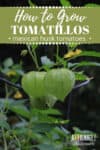
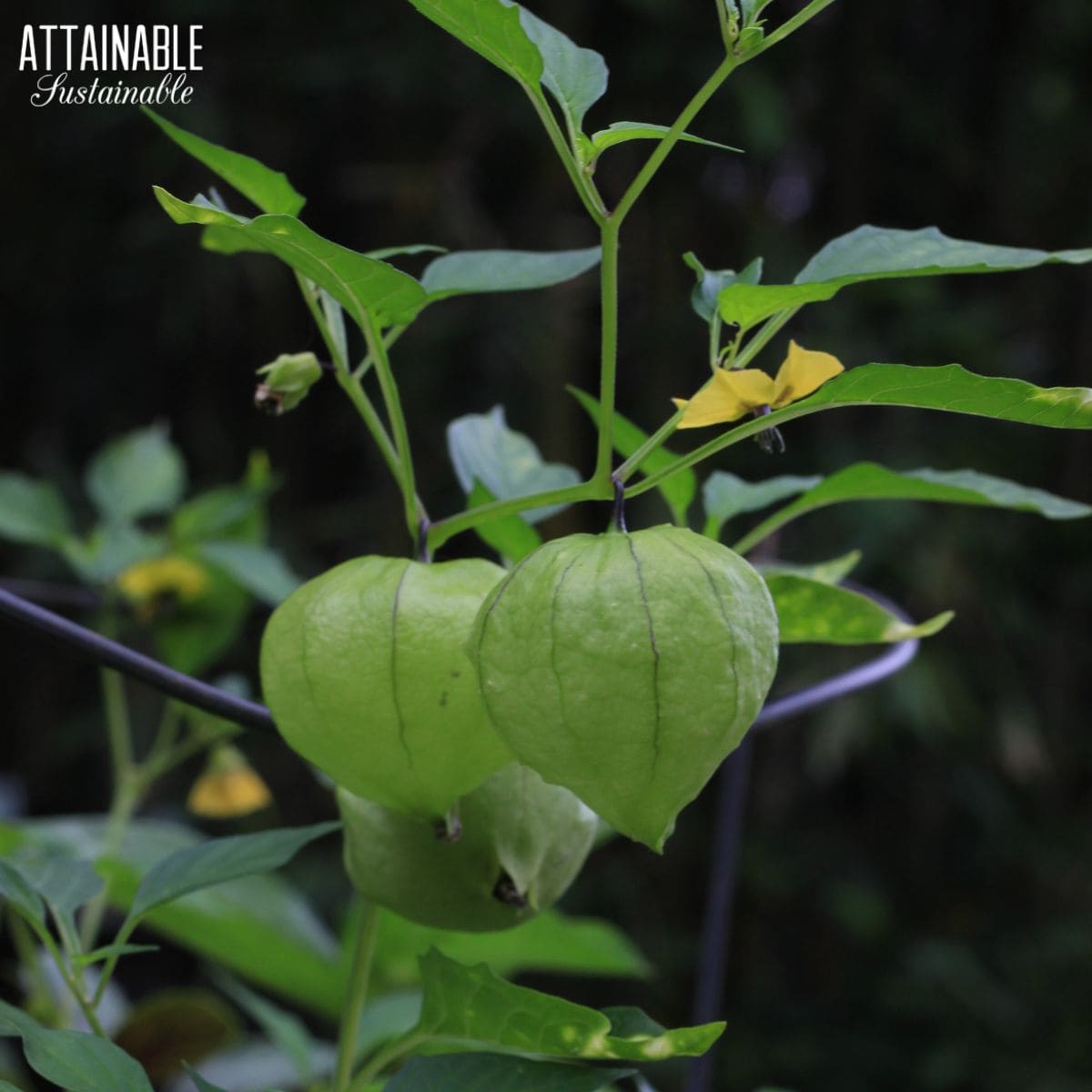

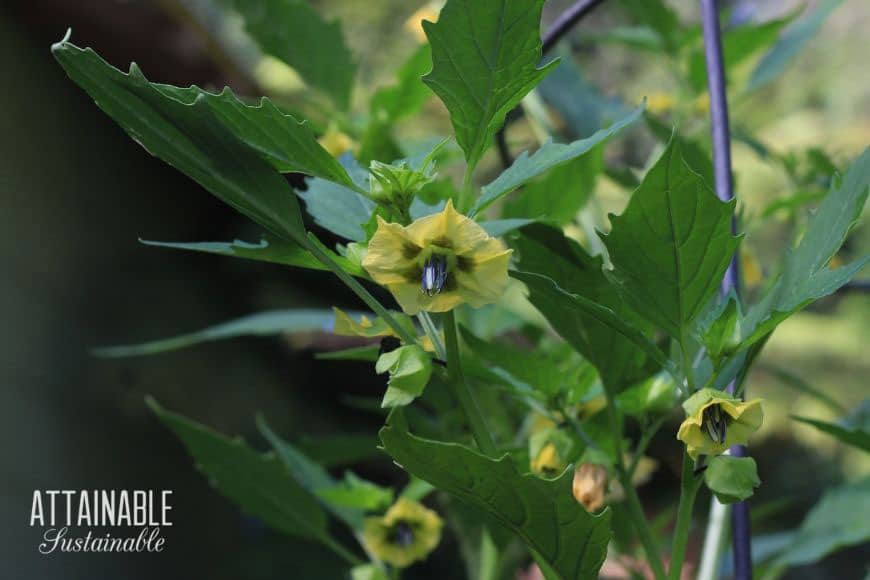
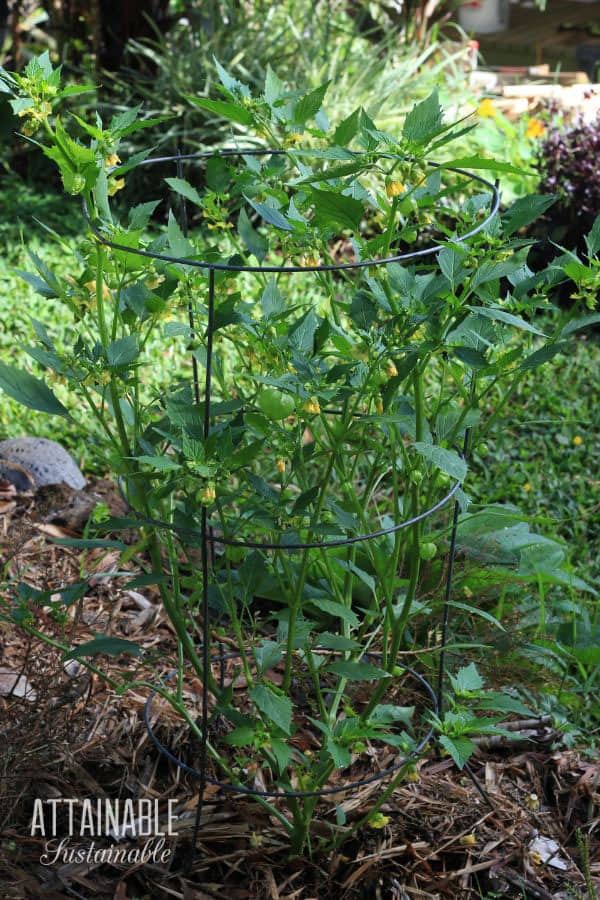
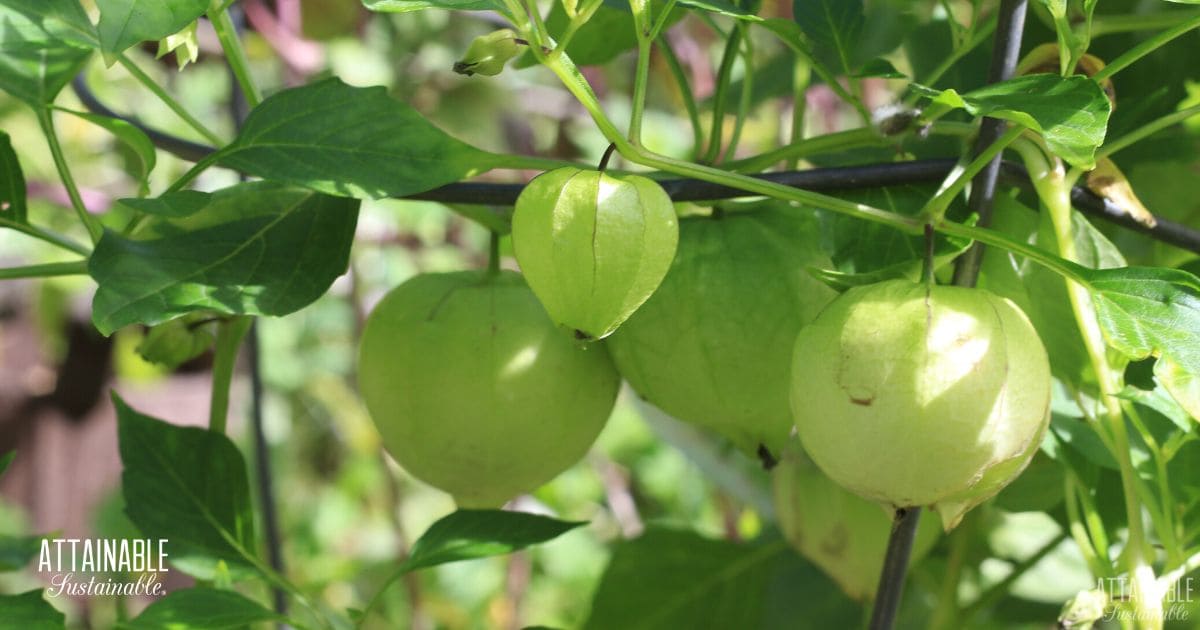
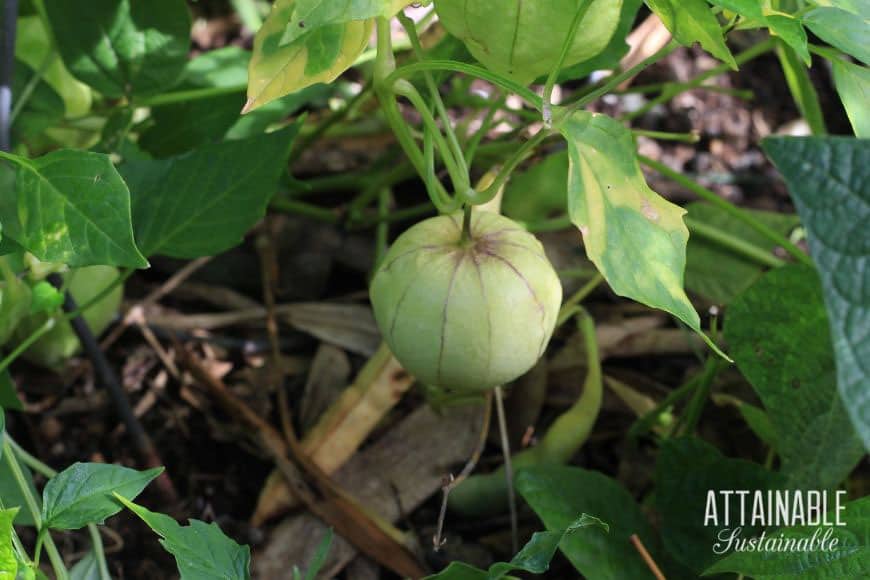
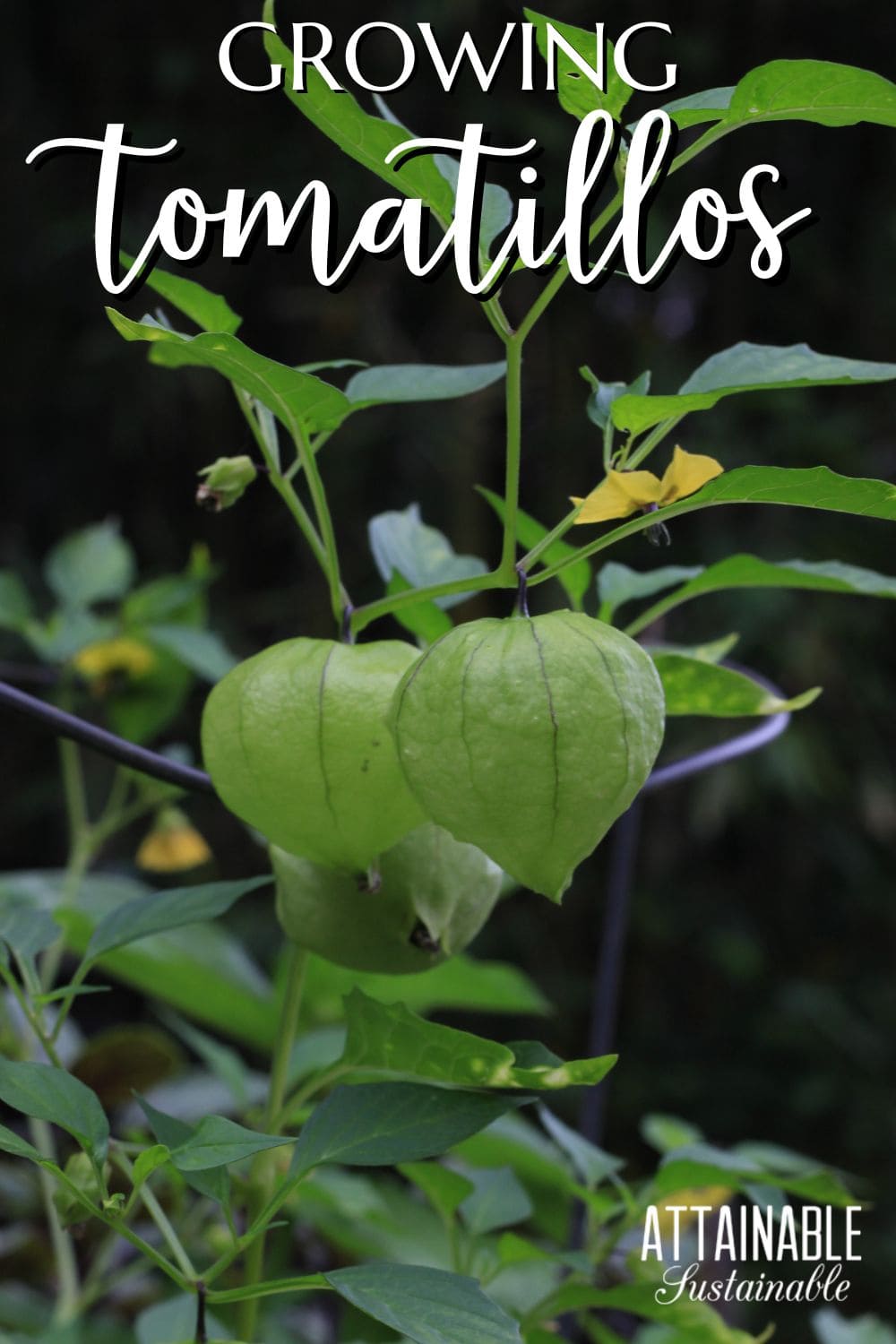





One thing you forgot to mention regarding tomatillos and it’s very important . . . every part of the plant is poisonous EXCEPT the actual fruit. When the husk is dry and splitting is when you can eat the tomatillo.